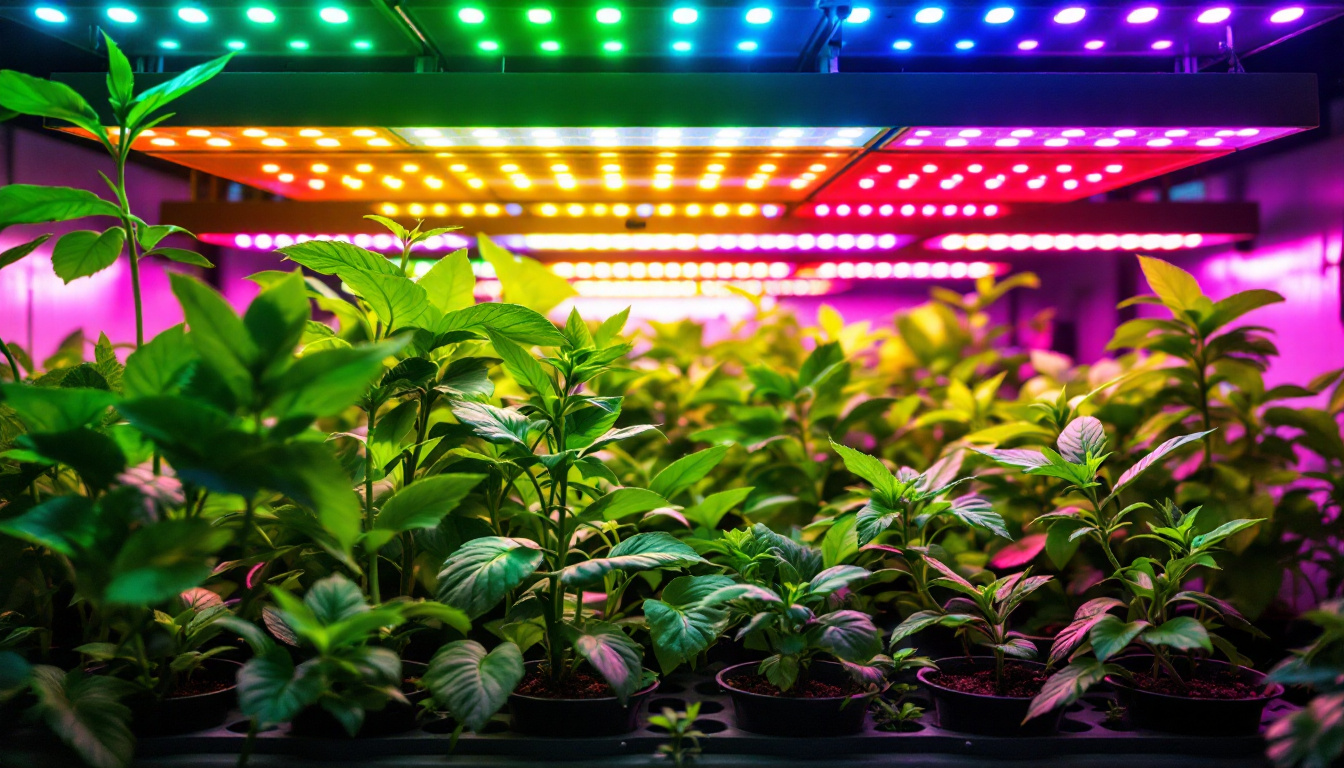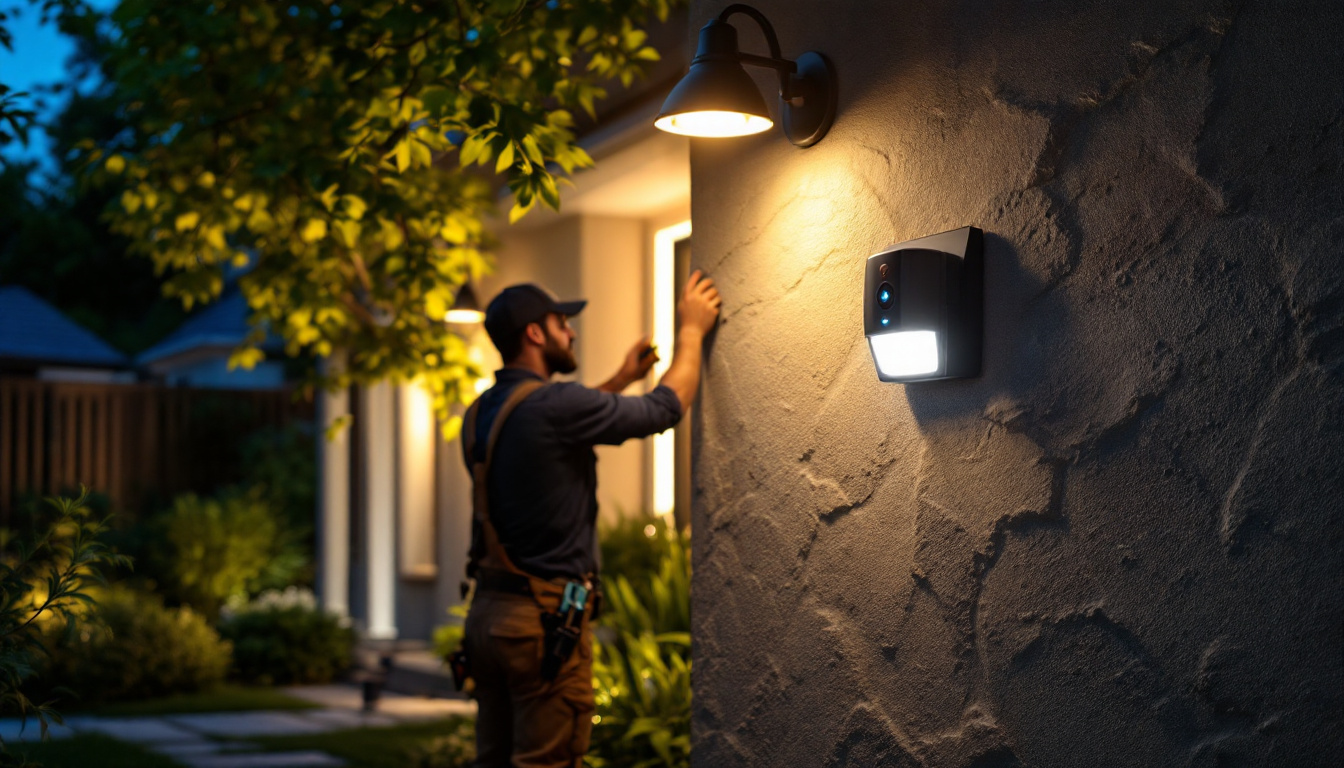
In recent years, the lighting industry has witnessed a significant transformation, particularly with the advent of LED technology. This shift is especially notable in the agricultural sector, where LED lighting has become an essential tool for optimizing plant growth. As the demand for sustainable and efficient farming practices increases, understanding the role of LED lighting in growing environments is crucial for lighting contractors and agricultural professionals alike.
Light Emitting Diodes (LEDs) are semiconductor devices that emit light when an electric current passes through them. Unlike traditional lighting options such as incandescent or fluorescent bulbs, LEDs are more energy-efficient and have a longer lifespan. This efficiency translates into lower operational costs and reduced environmental impact, making them an attractive option for various applications, including horticulture.
One of the most significant advantages of LED lighting is its energy efficiency. LEDs consume significantly less power compared to traditional lighting solutions, which is particularly beneficial in agricultural settings where lighting can account for a substantial portion of energy costs. By using LED lights, growers can reduce their energy consumption while still providing the necessary light spectrum for optimal plant growth.
Moreover, the low heat output of LEDs minimizes the need for additional cooling systems, further enhancing energy savings. This efficiency not only benefits the grower’s bottom line but also contributes to a more sustainable approach to farming. In fact, studies have shown that switching to LED lighting can reduce energy costs by up to 50% compared to conventional lighting, allowing farmers to allocate funds to other essential areas of their operations, such as crop research and development.
LED lights have a much longer lifespan than traditional lighting options, often lasting up to 25,000 hours or more. This longevity reduces the frequency of replacements, resulting in lower maintenance costs and less waste. For lighting contractors, this presents an opportunity to offer clients a reliable and durable lighting solution that aligns with modern agricultural practices.
Additionally, LEDs are more resistant to shock and vibration, making them suitable for various growing environments, including greenhouses and indoor farms. Their durability ensures consistent performance, which is vital for maintaining optimal growing conditions. The ability to withstand harsh conditions not only enhances the reliability of the lighting system but also supports the health of the plants, as consistent light exposure is crucial for photosynthesis and overall growth. Furthermore, advancements in LED technology have led to the development of customizable lighting solutions, allowing growers to tailor the light spectrum to specific plant needs, thereby maximizing yield and quality.
Plants rely on light for photosynthesis, and the spectrum of light they receive plays a crucial role in their growth and development. Different wavelengths of light can influence various aspects of plant biology, including germination, flowering, and fruiting. Understanding how LED technology can be tailored to provide specific light spectrums is essential for maximizing plant health and yield.
Research has shown that blue light (400-500 nm) is essential for vegetative growth, promoting leaf development and overall plant structure. On the other hand, red light (600-700 nm) is crucial for flowering and fruiting stages. By utilizing LED fixtures that can emit specific wavelengths, growers can create a customized lighting environment that meets the unique needs of their plants.
For lighting contractors, this presents an opportunity to design and install systems that incorporate adjustable LED fixtures. These systems can allow growers to modify the light spectrum based on the growth stage of their crops, ultimately leading to healthier plants and higher yields.
Full-spectrum LED lights are designed to mimic natural sunlight, providing a balanced spectrum of light that supports all stages of plant growth. These lights are particularly beneficial for indoor growing environments where natural sunlight is limited or unavailable. By providing a full spectrum, growers can ensure that their plants receive the necessary wavelengths for photosynthesis, leading to robust growth and development.
Lighting contractors can leverage this knowledge to recommend full-spectrum solutions to clients, helping them create optimal growing conditions regardless of their location. This not only enhances the grower’s productivity but also positions the contractor as a knowledgeable partner in the agricultural sector.
The versatility of LED lighting extends across various agricultural applications, from commercial greenhouses to vertical farms. Each application presents unique challenges and opportunities for lighting contractors to explore innovative solutions tailored to specific growing environments.
In greenhouse settings, LED lighting can supplement natural sunlight, particularly during the shorter days of winter or in regions with limited sunlight. By strategically placing LED fixtures throughout the greenhouse, growers can enhance light penetration and ensure that all plants receive adequate illumination.
Lighting contractors can assist by designing customized lighting layouts that consider the specific needs of different crops, optimizing light distribution, and minimizing energy waste. This tailored approach not only improves plant growth but also enhances the overall efficiency of the greenhouse operation.
Vertical farming has gained traction as a sustainable solution for urban agriculture, allowing for the cultivation of crops in stacked layers. In these environments, LED lighting plays a pivotal role in providing the necessary light for photosynthesis while minimizing energy consumption.
Contractors can offer specialized LED systems that cater to the unique requirements of vertical farms, such as adjustable height fixtures and customizable spectrums. By doing so, they can help growers maximize their space and yield, making vertical farming a viable option for urban areas.
Hydroponic and aquaponic systems rely heavily on artificial lighting to support plant growth. In these soil-less growing systems, the choice of lighting can significantly impact plant health and yield. LED lights are particularly well-suited for these applications due to their efficiency and ability to provide specific light spectrums.
Lighting contractors can play a crucial role in integrating LED solutions into hydroponic and aquaponic systems, ensuring that growers have the right lighting conditions for their crops. This expertise not only enhances the grower’s success but also positions the contractor as a leader in innovative agricultural practices.
As the world faces increasing environmental challenges, the agricultural sector must adapt to more sustainable practices. LED lighting offers several environmental benefits that align with these goals, making it an essential component of modern farming.
By consuming less energy and having a longer lifespan, LED lights contribute to a reduced carbon footprint compared to traditional lighting options. This reduction in energy consumption translates to lower greenhouse gas emissions, supporting global efforts to combat climate change.
For lighting contractors, promoting LED solutions can be a key selling point, as more growers seek to align their practices with sustainability goals. By positioning themselves as advocates for environmentally friendly solutions, contractors can attract clients who prioritize sustainability in their operations.
The durability and longevity of LED lighting also contribute to waste reduction. With fewer replacements needed, there is less waste generated from discarded bulbs. Additionally, many LED lights are recyclable, further minimizing their environmental impact.
Contractors can educate clients on the importance of waste reduction in their operations and how LED lighting can play a role in achieving these goals. This knowledge not only enhances the contractor’s credibility but also fosters a sense of responsibility within the agricultural community.
The landscape of LED lighting in agriculture is continually evolving, with new technologies and innovations emerging to meet the changing needs of growers. Staying informed about these trends is essential for lighting contractors looking to remain competitive in the industry.
As technology advances, smart lighting solutions are becoming increasingly popular in agricultural settings. These systems incorporate sensors and automation to optimize lighting conditions based on real-time data, such as plant growth stages and environmental factors.
Lighting contractors can explore opportunities to integrate smart lighting solutions into their offerings, providing growers with advanced tools to enhance productivity and efficiency. This integration not only positions contractors as forward-thinking professionals but also aligns with the growing trend of precision agriculture.
Ongoing research into the effects of light on plant growth continues to drive advancements in LED technology. As scientists uncover new insights into the optimal light spectrums for various crops, manufacturers are likely to develop more specialized LED products tailored to specific agricultural needs.
For lighting contractors, staying abreast of these developments can provide a competitive edge. By offering the latest products and solutions based on cutting-edge research, contractors can position themselves as trusted advisors to their clients, helping them achieve the best possible results in their growing operations.
LED lighting has emerged as a transformative force in the agricultural sector, offering numerous benefits that align with the goals of modern growers. From energy efficiency and longevity to the ability to provide tailored light spectrums, LEDs are becoming indispensable tools for optimizing plant growth.
For lighting contractors, understanding the importance of LED technology in agriculture presents a unique opportunity to expand their services and support clients in achieving sustainable and productive growing practices. By embracing the advancements in LED lighting and staying informed about industry trends, contractors can position themselves as leaders in the evolving landscape of agricultural lighting.
As the demand for sustainable farming practices continues to grow, the role of LED lighting in agriculture will only become more significant. Lighting contractors who recognize and adapt to these changes will not only enhance their business prospects but also contribute to a more sustainable future for the agricultural industry.
Ready to harness the power of LED lighting for your agricultural projects? At LumenWholesale, we provide lighting contractors with the highest quality, spec-grade LED lighting products at unbeatable wholesale prices. Say goodbye to local distributor markups and hello to superior lighting solutions that meet the strictest industry standards. With our hassle-free bulk buying and free shipping, you can equip your agricultural lighting projects with premium LEDs, ensuring energy efficiency, longevity, and tailored light spectrums for optimal plant growth. Elevate your service offerings and support sustainable farming with the best value in lighting—visit Wholesale Lighting at the Best Value and make the smart choice for your business and the environment.

Discover how choosing the right street light bulbs can significantly boost the efficiency of your lighting projects.

Discover the essential guide to light bulb base measurements that every lighting contractor should master.

Discover expert tips and strategies for lighting contractors to excel in installing LED motion lights outdoors.

Discover the step-by-step guide to calculating the annual cost of your light fixtures and learn how to optimize them for maximum efficiency.